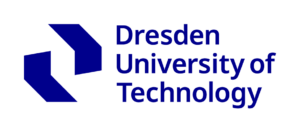Materials & Structures
Scientific Area Committee III
New materials are indispensable for the development of modern, environmentally friendly and resource-saving technologies and thus the basis for securing our standard of living. Innovative materials and structures are the beginning of forward-looking solutions for coping with social challenges such as increasing mobility, an ageing society and global climate change.
The Scientific Area Committee III Materials and Structures bundles the internationally proven high expertise in materials research and materials technology of the DRESDEN-concept partners for the development of fundamentally new material concepts and their integration into components and systems. To identify new research topics and innovative material concepts and to bring them to the top of the world and into application by using the bundled DRESDEN-concept expertise are the key objectives of the SAC Materials & Structures.
The SAC III conducts fundamental and application-oriented material research, which is designed in close cooperation with SAC I and SAC II directly for corresponding applications. Accordingly, the research activities of SAC III find their way into almost all relevant fields of application:
- Energy conversion (power plants, reactors, turbines, photovoltaics, thermoelectrics, fuel cells, wind power)
- Energy storage (electrical (stationary, moving, supercaps), mechanical and chemical-physical)
- Mobility (drive technology, structural components, lightweight construction, emission reduction for automobiles, railways, aerospace)
- Microelectronics
- Organic Electronics
- Sensor technology
- Smart systems
- Robotics (functional materials for Si/non-Si-based electronics/sensors, MEMS, quantum computing, lighting (OLED), OPV, 4D materials)
- Mechanical engineering and production (efficient digital production, tools and technologies for additive/subtractive manufacturing, high performance components, quality assurance and non-destructive testing etc.)
- Chemical industry (process engineering components and plants, process control and monitoring, auxiliary materials and consumables, etc.)
- Medicine and medical technology (biomaterials, instruments and devices, diagnostic and therapeutic systems, etc.)
For this purpose, the more efficient development of new materials forms a separate research focus, which is called digitization in materials research (simulation and digital material twining, high-throughput screenings).
Participating Partners



